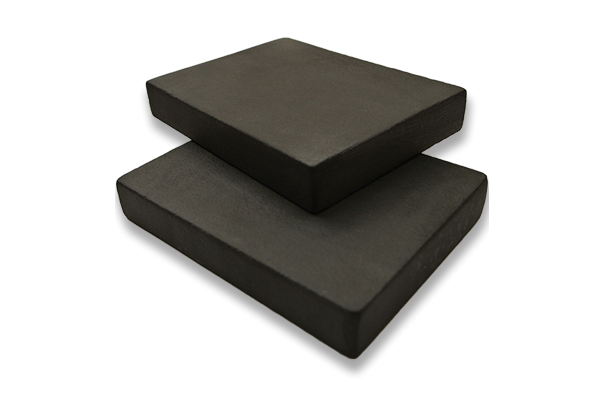Silicon Nitride (Si3N4) and Silicon Carbide(SiC+Si) Ceramic Substrates
Silicon Nitride (Si3N4) and Silicon Carbide(SiC+Si) Ceramic Substrates
Description

Silicon nitride (Si3N4) and silicon carbide (SiC) ceramic substrates are two types of ceramic substrates that are used in a variety of applications due to their excellent mechanical, thermal, and electrical properties.
Silicon nitride ceramic substrates have a high mechanical strength, hardness, and toughness, making them ideal for use in applications that require resistance to wear and abrasion, such as bearings and cutting tools. They also have a high thermal shock resistance and can withstand rapid temperature changes, making them ideal for use in high-temperature applications.
Silicon carbide ceramic substrates, on the other hand, have a high thermal conductivity and low thermal expansion coefficient, making them ideal for use in high-power electronic devices and power electronics. They also have a high mechanical strength and hardness, making them resistant to wear and abrasion.
Both Si3N4 and SiC ceramic substrates also have excellent electrical insulation properties, making them suitable for use in high-voltage applications. They can be manufactured in various sizes and shapes, including square, rectangular, and cylindrical shapes, and can be metallized to create conductive paths for electrical signals.
Si3N4 and SiC ceramic substrates are used in electronics applications where high mechanical strength and high-temperature range are required. Due to the substrate mechanical properties electronic modules that are manufactured on SiC and Si3N4 ceramics are stable in thermocycling, friction and aggressive environments.
| Properties | Material | ||||
| Si 3 N 4 | SiC + Si | SiC + Si + C | SiC | ||
| Colour | grey | brown | brown | brown | |
| Bulk density | g / cm3 | 3.21 | 3.05-3.07 | 3.00-3.05 | 3.10-3.15 |
| Surface roughness (Ra) | micron | - | - | - | - |
| Polished surface roughness (Ra) | micron | - | - | - | - |
| Open porosity | % | - | 0 | 0 | 2 |
| Mechanical characteristics | |||||
| Flexural strength | MPa | 750 | 320-350 | 270-300 | 380-410 |
| Elastic modulus | GPa | 350 | 340 | 310 | 370 |
| Hardness | kg / mm 2 | fourteen | 25-30 | 25-30 | 25-30 |
| physical characteristics | |||||
| Thermal expansion coefficient (40-800 ° C) | 10 -6 / ° C | 2.7 | 3.4-4.9 | 3.5-5.0 | 3.0-4.6 |
| Thermal conductivity (25 ° C) | W / m ∙ ° K | 55 | 120 | 130 | 110 |
| Specific heat | J / Kg ∙ ° K | 720 | - | - | - |
| Dielectric constant (1 MHz) | - | 8.5 | - | - | - |
| Dielectric loss (1MHz, 25 ° C) | ∙ 10 -4 | 3 | - | - | - |
| Operating temperature (oxidizing environment) | ° C | - | 1350 | 1350 | 1500 |
| Operating temperature (reducing environment) | ° C | - | 1350 | 1350 | 1800 |
| Technological characteristics | |||||
| DBC technology | X | X | X | X | |
| (Cu 127 - 450 μm, protective coatings) | |||||
| Thick film technology | X | X | X | X | |
| (Ag, Au, Ag-Pd, Ag-Pd-Pt, Ni - from 12 to 100 microns) | |||||
| Thin film technology | X | X | X | X | |
| (guides on request) | |||||
| Distance between scribing lines, mm | 0.20 ± 0.05 | - | - | - | |
| Minimum hole diameter, mm | 0.20 ± 0.05 | - | - | - | |
Order Form
About Semiconductor Electronics
SEMI EL project is a global supplier of materials, equipment, spare parts and supplies for the semiconductor industry.
Get In Touch
Email: info@semi-el.com

